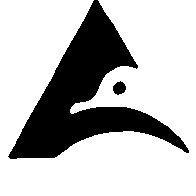LiDAR vs. Photogrammetry: Which Is Best for Your Mapping Project?
When it comes to drone-based mapping, LiDAR (Light Detection and Ranging) and photogrammetry are two of the most powerful tools available. Both technologies provide highly detailed 3D models and maps, but they have different strengths, limitations, and ideal use cases. Choosing the right method depends on the specific needs of your project, including accuracy requirements, terrain complexity, and budget considerations.
Understanding LiDAR and Photogrammetry
What Is LiDAR?
LiDAR is a remote sensing technology that uses laser pulses to measure distances to the Earth’s surface. A LiDAR-equipped drone emits thousands of laser pulses per second, and by measuring the time it takes for these pulses to return, it creates a highly accurate 3D point cloud representing the scanned environment.
What Is Photogrammetry?
Photogrammetry is the process of capturing overlapping images from different angles and stitching them together using specialized software to create 3D models, orthomosaics, and digital elevation models (DEMs). It relies on visual recognition and triangulation to reconstruct real-world environments.
Both methods have unique benefits and applications, but understanding their differences will help you determine which is best for your mapping needs.
Key Differences Between LiDAR and Photogrammetry
| Feature | LiDAR | Photogrammetry |
|---|---|---|
| Technology | Laser pulses | Overlapping images |
| Accuracy | Centimeter-level | Centimeter to decimeter level |
| Best for | Dense vegetation, complex terrain, bare earth mapping | Large-scale, high-resolution imagery, infrastructure mapping |
| Weather Conditions | Works in low light, penetrates vegetation | Requires good lighting conditions |
| Processing Time | Faster for large datasets | Requires significant computational resources |
| Cost | More expensive (hardware and processing) | More affordable |
When to Use LiDAR
LiDAR is best suited for projects requiring high-precision elevation data, especially in environments where vegetation or complex terrain may obstruct traditional imaging.
Ideal applications for LiDAR:
-
Forestry & Environmental Mapping: LiDAR penetrates tree canopies, allowing for accurate ground elevation models beneath dense vegetation.
-
Infrastructure & Utility Inspections: High-resolution 3D scans of bridges, power lines, and railways.
-
Topographic & Floodplain Mapping: Generates detailed digital terrain models (DTMs) for water flow analysis.
-
Mining & Quarry Surveys: Measures stockpiles and underground environments with extreme precision.
When to Use Photogrammetry
Photogrammetry is ideal for projects that require high-resolution images and 3D reconstructions of large areas with a cost-effective approach.
Ideal applications for photogrammetry:
-
Construction & Land Development: Generates accurate site plans and progress monitoring data.
-
Agriculture & Crop Analysis: Provides multispectral imaging for crop health assessments.
-
Urban & Real Estate Mapping: Captures detailed 3D cityscapes for planning and development.
-
Archaeology & Heritage Preservation: Creates detailed 3D models of historic sites and artifacts.
Which One Should You Choose?
The decision between LiDAR and photogrammetry depends on the specific needs of your project:
-
If you need to see through vegetation or capture bare earth terrain with high accuracy, LiDAR is the better choice.
-
If your project requires high-resolution color imagery, large-area mapping, or cost efficiency, photogrammetry is the way to go.
-
For survey-grade accuracy, LiDAR combined with GNSS RTK positioning (such as Emlid Reach RS2/RS3) provides unparalleled precision.
-
For general 3D modeling, site inspections, and volumetric measurements, photogrammetry offers an excellent balance of quality and affordability.
The Future of Drone Mapping: Hybrid Approaches
Increasingly, professionals are using a combination of LiDAR and photogrammetry to maximize accuracy and detail. By integrating LiDAR’s precise elevation data with photogrammetry’s visual richness, surveyors can create highly detailed and comprehensive geospatial models.
Conclusion
Both LiDAR and photogrammetry are powerful mapping tools, each with its own advantages. Understanding their strengths and limitations helps you choose the right approach for your specific needs. Whether you need high-accuracy terrain mapping, detailed infrastructure inspections, or cost-effective 3D modeling, our team can help you select the best solution.
If you’re interested in professional drone mapping services, contact us today to discuss how we can tailor our technology to your project!
